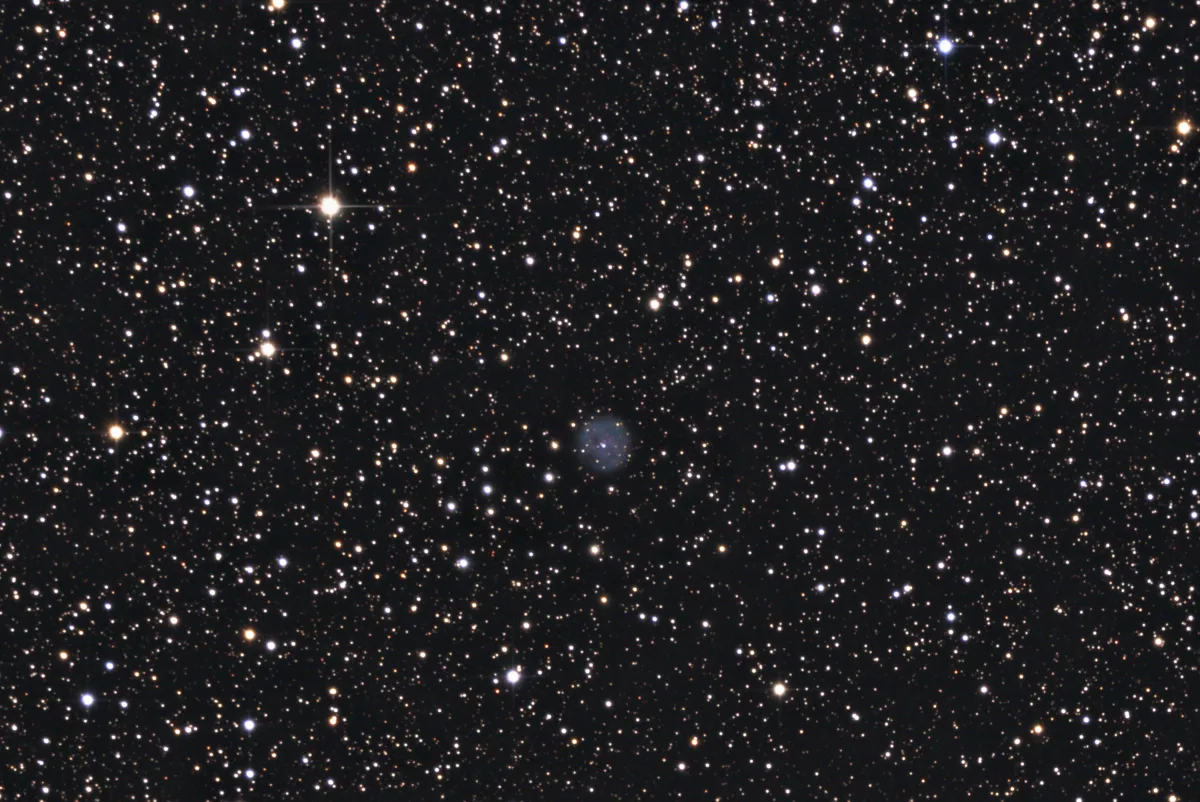Planetary Nebula NGC 6842

History
NGC 6842 was first sighted on 28 June 1863 by the German astronomer Albert Marth, independently on 26 August 1864 by the German astronomer Heinrich d'Arrest, and on 12th July 1866 by the American astronomer Truman Safford. Nature as a planetary nebula was discovered by Curtis in 1919.
Physical Properties
It is a planetary nebula about 0.9 arc minutes in diameter. Visual brightness ratings range from 13 mag to 16 mag. The distance is 1380 pc (4500 light years). [145, 196]
| Designations | PN G065.9+00.5: NGC 6842, PK 65+00.1, ARO 106, He 2- 451, Sh 1- 72, Sh 2- 95, VV 245, VV' 518 |
| Right Ascension (J2000.0) | 19h 55m 02s |
| Declination (J2000.0) | +29° 17' 21" |
| Dimensions | 57." (optical), 36." (radio) |
| Distance | 2.3 kpc |
| Radial Velocity | -5.0 ± 25.0 km/s |
| Expansion Velocity | 35.0 (O-III) km/s |
| C-Star Designations | AG82 388, CSI +29 -19529, PLX 4708 |
| C-Star Magnitude | U: 14.75, B: 15.65, V: 15.98 |
| Discoverer | CURTIS 1919 |
Finder Chart
The planetary nebula NGC 6842 is located on the border of the constellation Vulpecula and Cygnus, about 40 arc minutes east of the small open star cluster NGC 6834. On 20 July it is in opposition to the Sun and crosses the meridian at local midnight. The months of March to December are the best viewing times.
